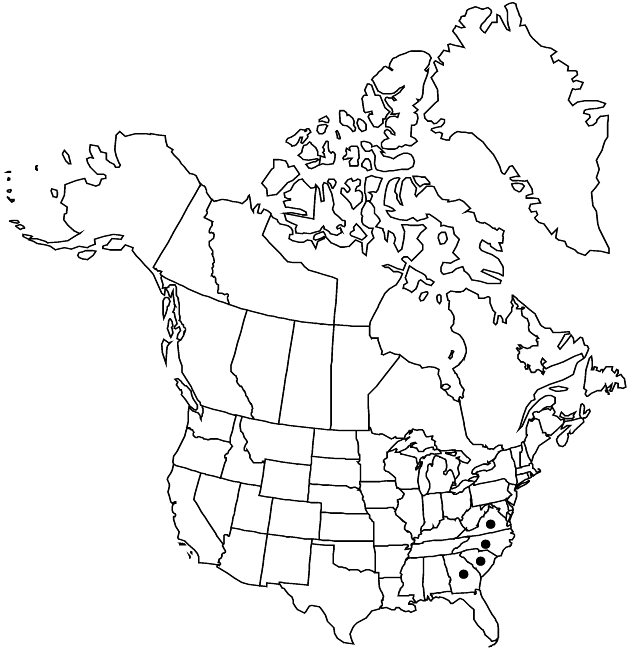Liatris virgata
J. Acad. Nat. Sci. Philadelphia 7: 72. 1834.
Plants 35–75 cm. Corms mostly globose. Stems glabrous. Leaves: basal and proximal cauline 1-nerved, narrowly oblanceolate, (50–) 90–150 × (2–) 4–9 (–12) mm wide, usually abruptly, sometimes gradually, reduced distally, glabrous or sparsely pilose (abaxially), glanddotted (proximal margins sparsely pilose-ciliate). Heads in loose, racemiform to spiciform arrays (not secund, internodes 6–20 mm). Peduncles 0 or (ascending) mostly 2–12 mm. Involucres campanulate-cylindric, (6–) 7–9 × 3.5–4.5 (–5) mm. Phyllaries usually in 3–5 (–6) series, in 5–6 (–7) series in largest heads, ovate-triangular to oblong, unequal, glabrous, margins with narrow, hyaline borders (lacking at apices), sometimes sparsely ciliolate, apices acute to obtuse-angled (with thickened, not markedly involute, apicula). Florets 7–10 (–12); corolla-tubes pilose inside. Cypselae (2–) 3–4 mm; pappi: lengths ± equaling corollas, bristles barbellate. 2n = 20.
Phenology: Flowering (Jul–)Aug–Oct(–Nov).
Habitat: Edges of swampy woods, stream margins, slopes, clearings, edges of upland woods, rocky woods, pine-oak woods, mixed deciduous woods, roadsides, Iredell soils, clays
Elevation: 50–1000 m
Distribution

Ga., N.C., S.C., Va.
Discussion
Liatris virgata is characterized by its non-congested arrangement of heads, often on a slightly zigzag axis, and especially by its relatively thickened phyllaries with angled apices (acute to obtuse-apiculate). The name Liatris regimontis has been misapplied to the species now identified as L. cokeri.
Selected References
None.
Lower Taxa
"barbellate" is not a number."fine" is not a number.